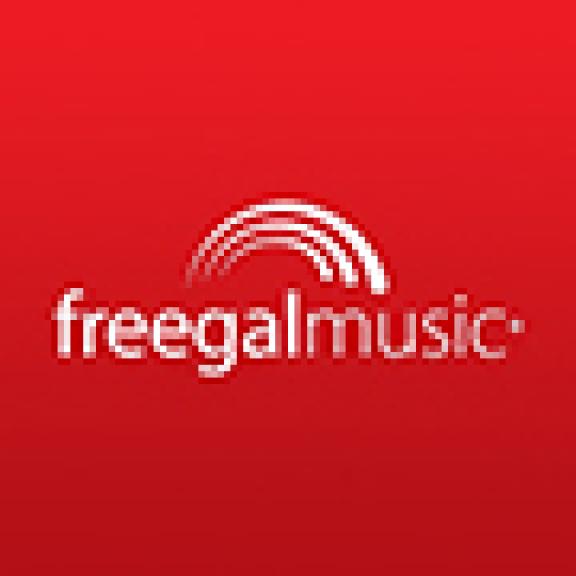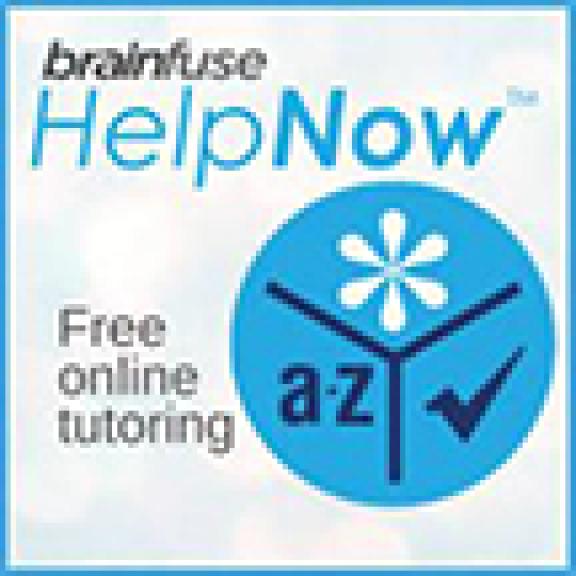Below are sources for Citation, Plagiarism and Copyright Law. Please note, clicking on some links will take you to external sources and off of the PCCLD website.
APA Style: How to cite ChatGPT
We, the APA Style team, are not robots. We can all pass a CAPTCHA test, and we know our roles in a Turing test. And, like so many nonrobot human beings this year, we’ve spent a fair amount of time reading, learning, and thinking about issues related to large language models, artificial intelligence (AI), AI-generated text, and specifically ChatGPT. We’ve also been gathering opinions and feedback about the use and citation of ChatGPT. Thank you to everyone who has contributed and shared ideas, opinions, research, and feedback.
APA Style Blog: How to Cite Software in APA Style
Can you cite computer software in APA Style? Yes! Here’s everything you need to know.
Purdue Owl Reference List: Other Non-Print Sources
The Purdue Owl gives instructions on how to cite interviews and other non-print sources in APA style.
A. You do need to credit ChatGPT and similar tools whenever you use the text that they generate in your own work. But for most types of writing, you can simply acknowledge the AI tool in your text (e.g., “The following recipe for pizza dough was generated by ChatGPT”).
Grammarly: How to Cite ChatGPT and AI in APA Format
Among its many uses, AI like ChatGPT can be a valuable research tool for papers and other academic writing. But if you’re using its information in a paper that follows APA or another citation style, you still have to cite it like any other source. However, since AI is neither a standard source nor personal communication, how do you cite AI in APA 7?
MLA: How do I cite an artificial intelligence?
How you cite a program that uses artificial intelligence depends on the format in which you interact with it, as well as the goal of your citation.
MLA: How do I cite generative AI in MLA style?
The MLA’s method for citing sources uses a template of core elements—standardized criteria that writers can use to evaluate sources and create works-cited-list entries based on that evaluation. That new technologies like ChatGPT emerge is a key reason why the MLA has adopted this approach to citation—to give writers flexibility to apply the style when they encounter new types of sources.
*All information below is provided by University of South Florida Libraries. Please see this link for more information*
What is Copyright?
- Copyright is a form of intellectual property protection provided by the laws of the United States (title 17, U.S. Code) to the creators of "original works of authorship." Copyright grants creator/authors the ability to control the use of the work upon creation for the the life of the author +70 years, and gives to authors certain exclusive rights:
- Make copies
- Distribute copies
- Prepare derivatives based on the original work
- Perform the work publicly
- Display the work publicly
Is Content Created by Generative AI Tools Copyrightable?
- Currently, copyright protection is not granted to works created by Artificial Intelligence. The U.S. Copyright Office has issued guidance that explains the requirement for human authorship to be granted copyright protection and provides information to creators working in tandem with AI tools on how to effectively and correctly registered their works.
US Copyright Office and Artificial Intelligence
"The Copyright Office has launched an initiative to examine the copyright law and policy issues raised by artificial intelligence (AI) technology, including the scope of copyright in works generated using AI tools and the use of copyrighted materials in AI training. "
Copyright Registration Guidance
Guidance for registering Works Containing Material Generated by Artificial Intelligence by the U.S. Copyright Office
What is protected?
- Under the copyright act, section 102, original works of authorship that are fixed in any tangible medium of expression now known or later developed are protected. These works include the following categories:
- Literature
- Music and lyrics
- Drama
- Pantomime and dance
- Pictures, graphics, sculpture
- Films and audio visual works
- Sound recordings
- Architecture
- Software
- Copyright does not protect ideas, procedures, processes, methods, concepts, useful objects, or facts. Copyright protection is also not available for any work created by the U.S. Federal Government. However, publications made by third parties under government contract and by state governments (for example) are considered differently by the law and may be protected by copyright.
How long is a work protected by copyright?
- Works are protected for the life of the author plus 70 years per the 1998 Copyright Term Extension Act which applied to works created from 1978 onwards. The protected status of works published before 1978 and after 1923 varies in accordance with how they were published, registered, and renewed.
- Unpublished materials, like diaries and correspondence, prior to 1978 are protected for the life of the author plus 70 years. When a work is no longer protected by copyright due to copyright expiring, it falls into the public domain. See What is the Public Domain for more.
- Copyright law and duration varies per country. However, several countries have worked together to create international agreements that align policies across borders. Foreign works are, for the most part, protected for the same term as works published within the user's country for all signatories of the Berne and TRIPS agreements. The U.S. is both an adopter of the Berne convention and a signatory of the TRIPS agreement.
Using Generative AI and Copyrighted Works
- If you use AI tools to alter materials that are copyrighted, you may be infringing on the copyright owners rights by creating a derivative, and permissions may need to be obtained.
What Does Plagiarism Look Like with AI?
Plagiarism is the act of representing, copying, or taking credit of the work of another, and not giving the appropriate credit no matter how it was obtained. Some good things to remember:
- The work that you do should be your own work, and anything that is written by AI is not considered original work.
- Tools that check for plagiarism are okay to use because your work is being scanned for possible mistakes/issues.
Typeset.io, now known as SciSpace, is a comprehensive academic platform providing access to over 200 million research papers. It assists researchers in discovering, understanding, writing, formatting, and publishing their research. The platform, equipped with AI tools, simplifies academic texts and ensures compliance with journal guidelines. It's a valuable resource for the research community, offering both a vast paper repository and a user-friendly SaaS environment for research authoring.
Pulling from publisher partnerships, data providers, and web crawls, this AI-driven search and discovery toolset provides a streamlined search platform for over 200 million academic papers. Developed within the Allen Institute for AI, this open project has been worked on since 2015 with the goal of supporting high-quality research. Free to use.
What is Fair Use?
The Fair Use Doctrine (section 107 of U.S. Copyright law) is a part of the Copyright Act of 1976 and is based on a history of judicial decisions that recognized that some unauthorized use of copyrighted materials were "fair uses."
Section 107 contains a list of the various purposes for which the reproduction of a particular work may be considered fair, such as criticism, comment, news reporting, teaching, scholarship, and research. There are four factors that Section 107 lists, in order to determine whether or not a use if fair :
- The purpose and character of the use, including whether such use is of commercial nature or is for nonprofit educational purposes
- The nature of the copyrighted work
- The amount and substantiality of the portion used in relation to the copyrighted work as a whole
- The effect of the use upon the potential market for, or value of, the copyrighted work
Fair Use Evaluator Tool and Other Resources
The ALA Office for Information and Technology has an evaluation tool to help you better understand and determine the "fairness" of a use.
- Fair Use Evaluator Tool
- Columbia University Copyright Advisory Services
This website covers the basics of Copyright Law, and Fair Use.
What are Open Educational Resources (OER)?
Open Educational Resources (OER) are images, videos, audio, and text that reside in the Public Domain or are under a copyright that has been released under an open license.
Read more about OER HERE
Open Education Resources:
*Sources from Copyright LibGuide complied by the University of South Florida Libraries*
Best Practices and Guidelines
The Copyright Guide's Open Use Media Resources page can help you find pictures, audio, and video that is in the public domain or has been released with an open use license.
- Academic and Research Libraries
Association for Research Libraries. (2012). Code of Best Practices in Fair Use for Academic and Research Libraries Dance Heritage Coalition information on Best Practices in Fair Use of Dance-related materials.
- Documentary Filmmakers
Documentary Filmmakers’ Statement of Best Practices in Fair Use. (2005) AUSOC Center for Social Media. - Online Video
Code of Best Practices Committee (2008) Code of Best Practices in Fair Use for Online Video. AUSOC Center for Social Media - Media Literacy Education
Center for Media & Social Impact. Code of Best Practices in Fair Use for Media Literacy Education. - Visual Arts
Center for Media & Social Impact. (2015) Code of Best Practices in the Fair Use for Visual Arts.
Open Use Collections
Below are media resources that are open to use:
Open Use Image Collections
American Memory Collection (Library of Congress)
An internet based archive for public domain image resources, as well as audio, video, and archived Web content.
The Art Institute of Chicago has contributed approximately 1,450 images from their global permanent collection to the Artstor Digital Library. The selection in Artstor represents the diversity and excellence of the collection, featuring iconic highlights with an emphasis on antiquities from various cultures, European paintings, and works on paper
High resolution, public domain, classical art works.
Cleveland Museum Open Access Collection
The Cleveland Museum of Art released more than 34,000 digital images of public domain works in high resolution.
The Florida Center for Instructional Technology collection of clipart for use in non-commercial, non defamatory educational projects subject to minor restrictions.
An online sharing service where users share free public domain vector cliparts, or vector cliparts from public domain photos.
Search for images that are in the public domain OR have been granted creative commons status.
A search engine of free vector designs. The majority of the resources offered at Freepik can be used for free with attribution.
A search engine for locating images released with a Creative Commons license.
Images on Pexels are released under Creative Commons CC0 and can be used for personal or commercial purposes freely.
Images and videos on Pixabay are released free of copyrights under Creative Commons CC0 and can be downloaded, modified, distributed, and used them royalty-free.
The Smithsonian Institution is the world’s largest museum, education, and research complex, with 19 museums and the National Zoo—shaping the future by preserving our heritage, discovering new knowledge, and sharing our resources with the world.
An online database of freely usable media files to which anyone can contribute.
Open Use Audio Collections
A community music site featuring remixes licensed under Creative Commons where you can listen to, sample, mash-up, or interact with music in whatever way you want.
Collaborative database of Creative Commons Licensed sounds.
Royalty-free music site. Each piece on this site is available under different licenses and uses creative commons by attribution 3.0
Recordings, sheet music, and textbooks available to the public for free, without copyright restrictions.
National Jukebox (Library of Congress)
Historical sound recordings available to the public free of charge.
Open Use Video Collections
Digital archive of Internet sites, audio recordings, moving images, and text.
A repository of digitized video content for the digital video, multimedia retrieval, digital library, and other research communities. Created and sponsored by UNC's School of Library & Info Science. Archival videos include storyboards but no closed captions.
Videvo offers stock video footage and motion graphics for use in any project, commercial or non-commercial, through use of its own license or CC 3.0 license.
A browse-able collection of Creative Commons licensed videos.
YouTube Creative Commons search
By appending “, creativecommons” (including the comma) to the end of your search term, you can filter for YouTube videos released with a creative commons license.








